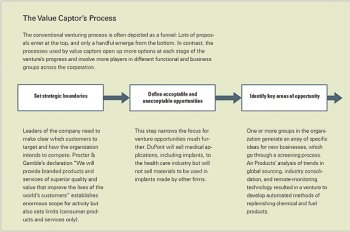

The concept in Quick
Many businesses’ start up business initiatives have sorry track documents. How many real ventures established is tiny, and their costs far exceed original quotes.
Why these disappointments? Companies move projects ahead only once they achieve preset goals. However vital elements—such as which the intended people might be—can modification along the way. When a project doesn’t meet predefined objectives, it is killed. The organization cuts its losings and doesn’t study on the knowledge.
There are various other choices besides starting or killing, state McGrath and Keil. Like, recycle by intending a venture at a new marketplace. Spin the project to various other owners. Spin it directly into a well established company device that may use it. Or salvage important pieces such as technologies, capabilities, and patents.
Squeeze every bit of feasible worth from your own endeavors, therefore strengthen overall return on those investments—making development a genuine motor of renewal inside business.
The concept in Practice
How-to draw out more worthiness from your endeavors? McGrath and Keil offer these tips:
Expand The Options
Consider these choices to launching or killing a project:
- Recycling. You’ve found that a venture’s original concept is flawed. Before abandoning it, explore any brand-new options it would likely have unearthed—such as a new target market which will value the advantages the task provides.
- Rotating off or certification. Your venture’s business design simply does not fit comfortably with your business’s. The task might continue to have a bright future outside your company. Venture capitalists might want to straight back it as an independent entity. Somebody might choose to license its intellectual residential property.
- Spinning in. Your project’s marketplace isn’t book or large enough to justify generating a separate company. Identify where else in your business the theory may have quality, and go it indeed there.
- Salvaging. Your endeavor has actuallyn’t developed a viable products or services. But it contains assets of some worth internally. Break-up the project. Then harvest its constituent elements—patents, companies, specific equipment, certain expertise—for usage elsewhere inside company.
 Treat Venturing as a Discovery Process
Treat Venturing as a Discovery Process
To come up with comes back from all types of price inside endeavors, treat each project as a breakthrough process, not a go/no-go idea. Handle each step in the process in a different way:
- Reviews. Feature individuals from units during your business which will have future interest in a venture. They could help you see whether the entire project or some of its elements would most readily useful be collapsed into founded companies.
- Launches. Observe that skills and sources needed to test and flesh aside an idea may differ extremely from those needed to start the theory as a business. If they do, designate different people and organizational frameworks on launch.
- Progress metrics. Make mastering the central goal of each venture plan. Validate your assumptions as rapidly and cheaply that you can, after that revise the plan at key milestones if reality shows distinct from your expectations.
- Funding. Fund simply to next milestone in your endeavor plan, and position inexpensive milestones early in the process.
- Staffing. Feature some strong players possessing knowledge about the unpredictability of the latest business releases. And methodically transfer people who have venture experience into the main-stream company.
Executives chronically complain about their particular organizations’ sorry track documents in creating brand new organizations, for apparently reasons. The proportion of ventures being actually launched is reasonable, together with costs of not only the failures but in addition the successes frequently dwarf original estimates. Indeed, some studies have discovered that a firm typically has to develop tens of thousands of ideas before attaining even one commercial success.
INTERESTING VIDEO












